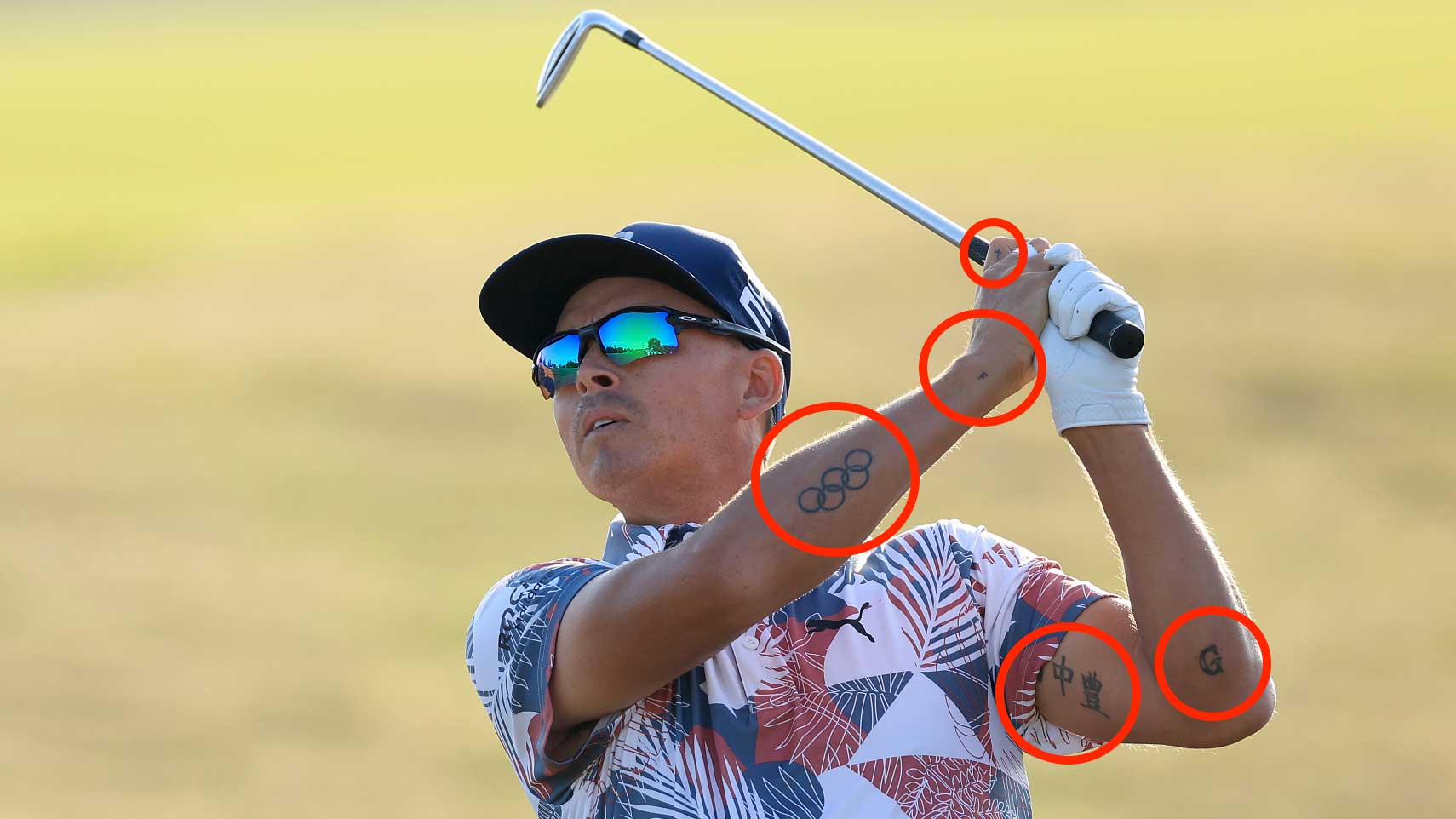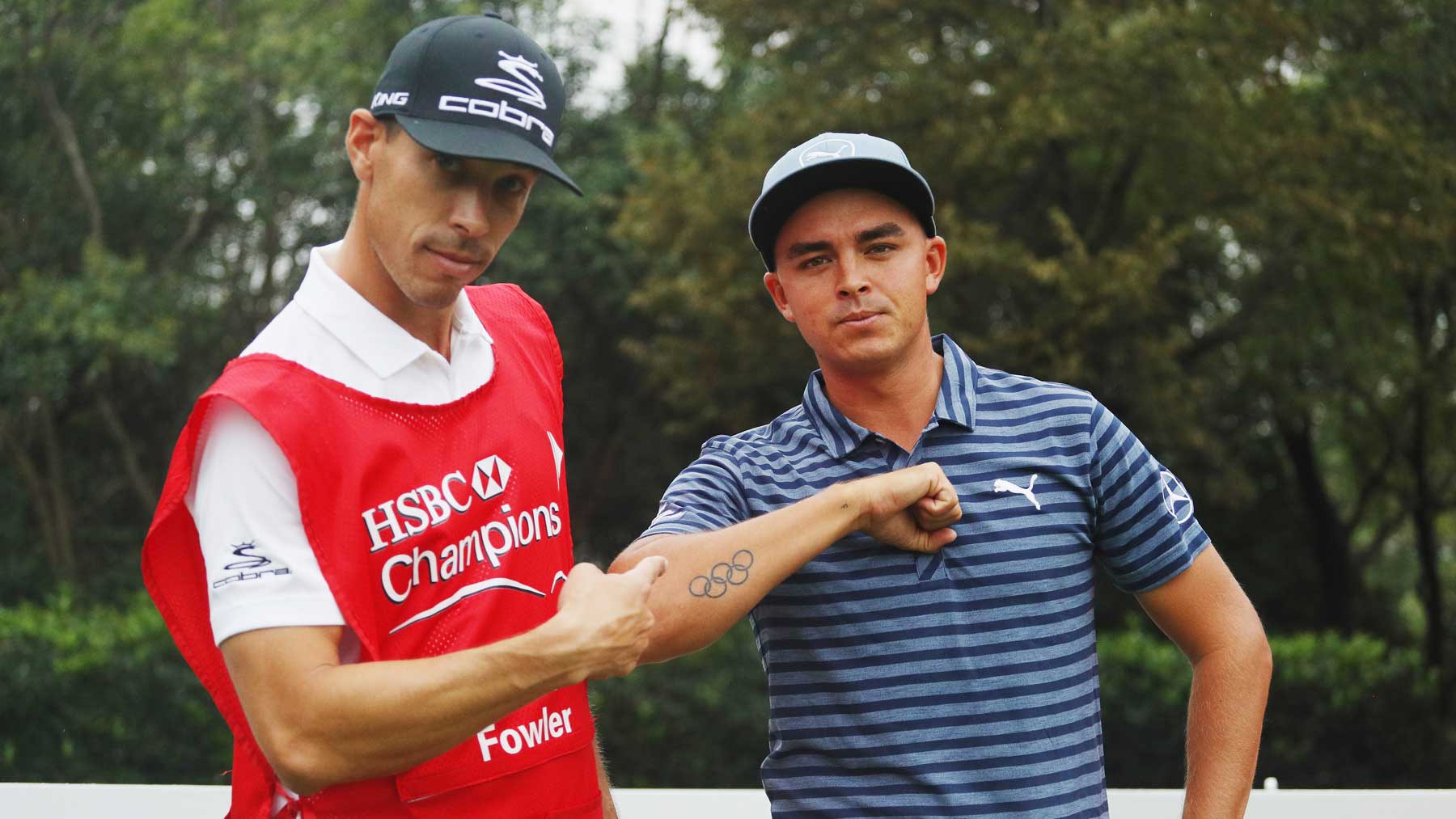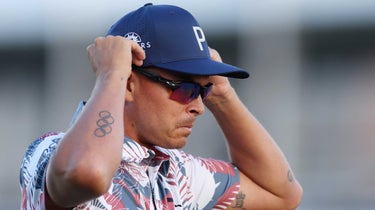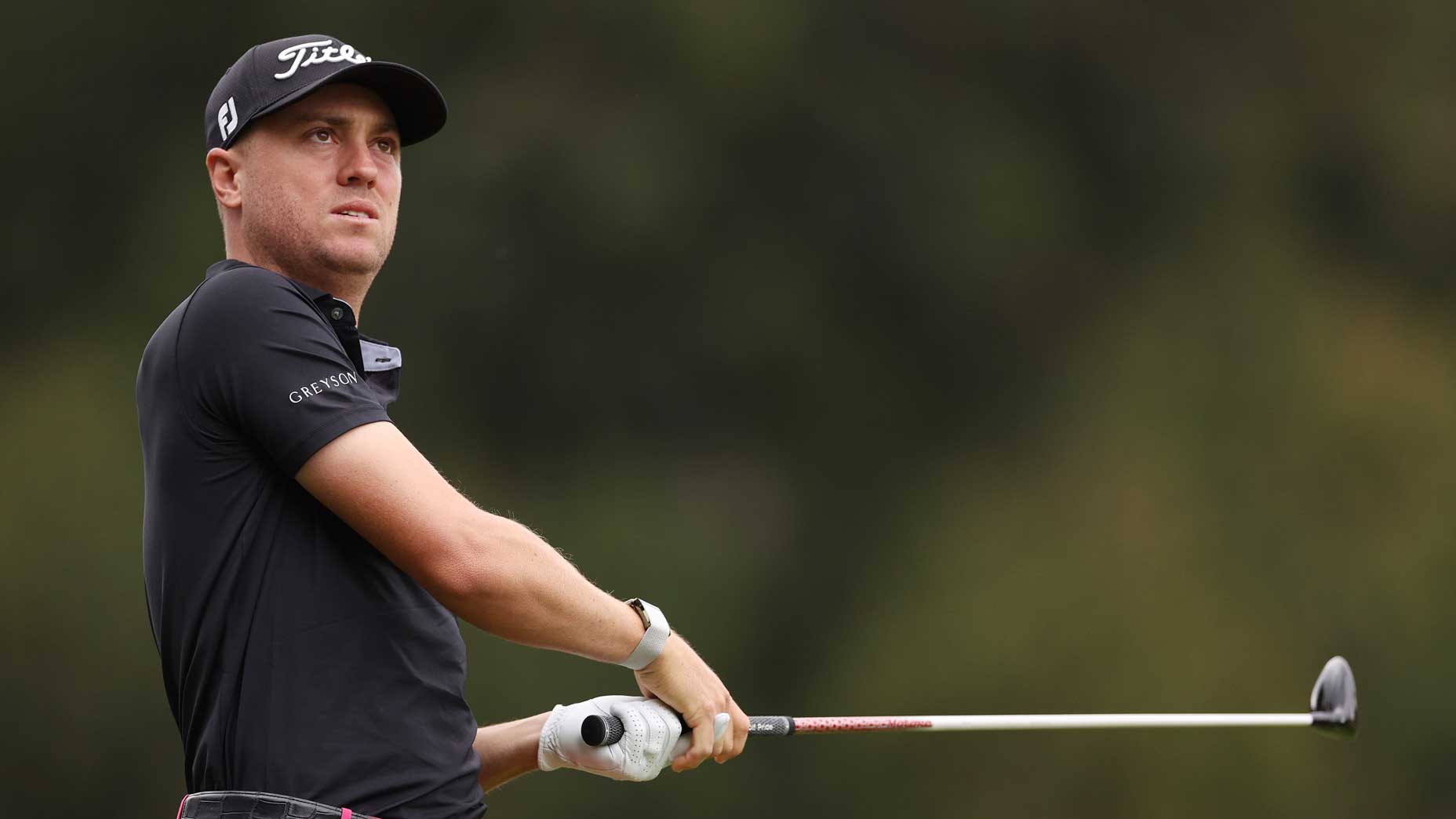
Rickie Fowler’s ink has meaning.
getty images
LOS ANGELES — When Rickie Fowler competed for Team USA in the 2016 Olympics in Rio, he got pally with a synchronized diver named Sam Dorman. One night at dinner, the two athletes hatched a plan: When they returned to the States, they would get matching Olympic ring tattoos. Upon arriving home, they followed through — with an inking session at a Miami tat parlor.
If you’ve been watching Fowler over the past couple of days at the U.S. Open at Los Angeles Country Club, where he has seized the 36-hole lead, you likely spotted the rings on Fowler’s right forearm. Perhaps you noted some other markings, too, because there are several on Fowler’s body, each with its own meaning that provides some insight into Fowler’s values and life story.
We begin with the rings, which underscore what playing for his country means to Fowler, not only in the Olympics but also in Ryder and Presidents Cups. “I think any time we get to throw red, white and blue on and represent our country, we relish the opportunity,” Fowler said in 2016. Of the Olympics in particular, he added: “This is a new experience. I think with the time I’ve been here and seeing what it means to some of the other athletes, getting to be here for, not just the United States, but all the other countries, this is a special opportunity for sure.”
Fowler shot even par over four rounds on Gil Hanse’s Rio course to tie for 37th but his middling finish did not quell his patriotism.

getty images
Further down Fowler’s right arm, on the outside of his wrist, is a more subtle symbol — an “F” — that doesn’t require much explanation. The letter is a nod to his surname.
Now, we move to the inner-bicep on Fowler’s left arm, which is home to Japanese characters that honor his late maternal grandfather, Yutaka Tanaka, who was instrumental in introducing Fowler to the game in Murrieta, Calif., about 90 miles south of LACC. “His work ethic as well as his demeanor and personality is what rubbed off on me quite a bit,” Fowler said in 2016. “Not that he spent much time in Japan, he was born in the States but definitely has some of the Japanese culture and ways of life so. So yes, there’s definitely a part of me that is influenced very much by him and the Japanese culture.”
Still on Fowler’s left arm, just below his inner elbow, you might have spotted a block-letter “G.” That was Fowler’s first tattoo, which he commissioned in 2015 in support of Georgia Veach, a young Seattle girl who was battling a rare brain disorder called lissencephaly.
On the inside of Fowler’s left wrist: yet more ink, a replica of the signature of his first coach, Barry McDonnell, who died in 2011. McDonnell worked with young Rickie at a driving range in Murrieta, and was “the only coach I ever had,” Fowler said. “Other than my family and closest friends, he was probably one of the most important people in my life.”
In his spare time, McDonnell enjoyed sketching with charcoal and would sign his finished work. Fowler took a photo of McDonnell’s Hancock and had it needled on his wrist.
Next up: the top of Fowler’s left ring finger, where he squeezed in an “XV,” which in Roman numerals represents the date on which he married Allison Stokke: October 15, 2019 — or 10/5.
The last of Fowler’s visible tattoos is on the inside of his right index finger: a tiny cross that emblemizes his Christian faith.
Should Fowler win at Los Angeles Country Club this weekend, perhaps he’ll celebrate the occasion with another tat. He still has plenty of available skin upon which to ink the U.S. Open trophy.









